It’s once again time to take a look at what trends will be on the menu for 2023.
Next year will usher in new flavors, a focus on fresh ingredients, innovation, and dare we say it, a lot of fun.
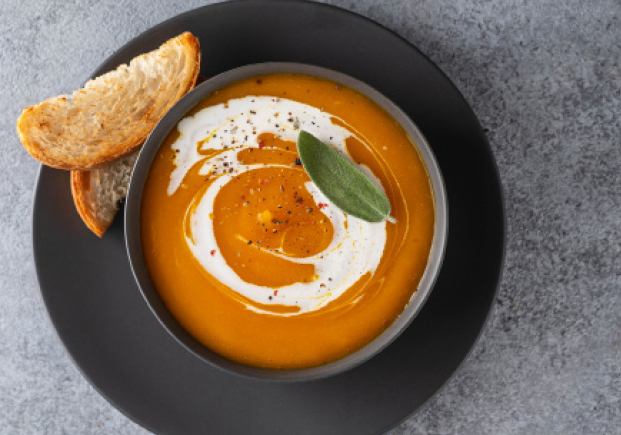
Pumpkin soup with sage
A happy & healthy world
Though not necessarily a new trend, 2023 will continue to put a strong emphasis on sustainability through clean label products and upcycling.
Clean label
Plant-based eating has been in vogue, and now clean eating is on the rise, calling for fewer, simpler ingredients.
According to the Food Institute, one in 10 consumer conversations on plant-based or vegan food are about clean eating, with significant references to natural foods that are healthy, sustainable, and free of artificial ingredients.
In response, a number of companies and product developers are spearheading a new breed of plant-based foods that highlight the use of minimally processed and recognizable ingredients. The number of ingredient companies that make clean labels building blocks to improve texture, flavor, and appearance for plant-based brands is also predicted to increase in the years ahead.
It’s time to upcycle
According to Upcycled Foods Inc., every year roughly a third of all food is wasted. That equates to about 1,000 pounds per person. To combat this, more companies and chefs are finding innovative ways to reuse, or “upcycle,” foods that may otherwise go unused or be thrown away.
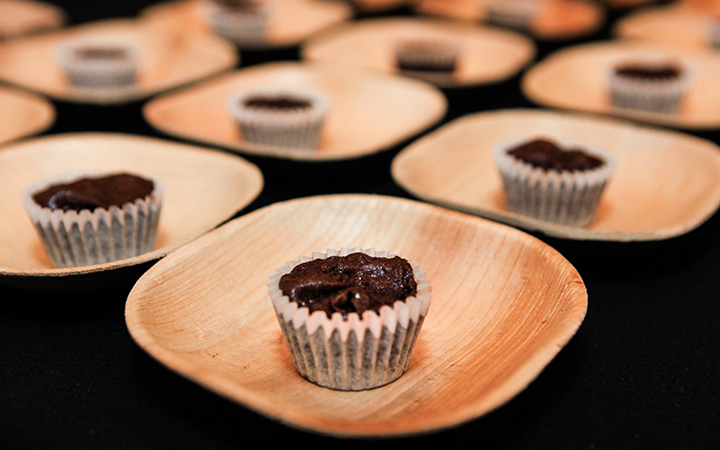
During the International Foodservice Editorial Council's Annual Conference (held in November in Santa Barbara), Upcycled Food Inc teamed up with Chef Sherry Yard (Cake Wars: Christmas) to create an original cookie recipe using its Regrained Supergrain+®, which is a nutrient-dense flour made from spent brewer's grain. Photo courtesy Buzz Orr Multimedia
A few examples of different ways to upcycle include:
- Repurposing pulp: Nondairy milk alternatives like oat milk and almond milk have become commonplace on shelves and in coffee shops but making them leads to a byproduct that’s often wasted—at least until now. Brands are beginning to upcycle these byproducts to create new innovations in the baking space, from alternative flours to baking mixes.
- No whey: Leftover whey from cheese can be repurposed into dressings, used for fermentation, added to yogurt smoothies and shakes, and used as cooking liquid for potatoes, rice, grits, pasta, and grains.
- Cheers to beer: Rescued brewer’s “spent” grain (BSG) from beer can be upcycled in place of traditional flours and grains.
- More meat: Off-cuts of steak can be repurposed into meatballs.
“This is having a moment right now,” said Dan Kurzrock, founder & CEO, of Upcycled Foods Inc. during the annual International Foodservice Editorial Council (IFEC) conference in Santa Barbara in November 2022. “You don’t need to make it a huge chasm for people to cross.”
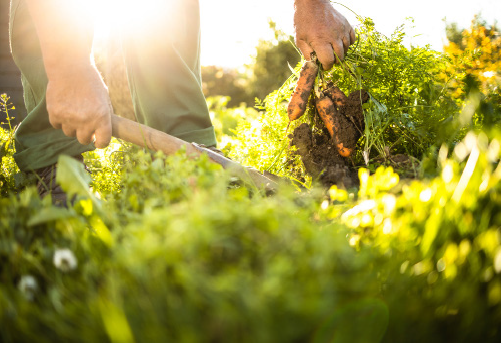
Regenerative refers to farming, ranching, and pastoral practices that contribute to stabilizing the planet's climate and carbon cycles by rehabilitating organic matter in soil, thereby increasing carbon storage, retaining moisture, and safeguarding biodiversity and living systems.
New diets to watch
Two new eating styles are gaining traction among consumers: regenetarian and climatarian.
- A regenetarian is someone who strives to eat in a way that regenerates the planet and humanity. By only consuming food that is produced using regenerative food production practices (diverse crop varieties, rotational grazing, agroforestry, etc.), consumers can contribute to the regeneration of natural systems.
- A climatarian swaps from beef and lamb to pork and poultry to reduce carbon emissions.
Bread is back
Charcuterie boards have had their moment (and they continue to), but now it’s time to make way for the bread board.
“People are loving bread again,” said Chef Jason Sutton (Footers Catering) during a Chef Roundtable webinar earlier this year with the International Caterers Association.
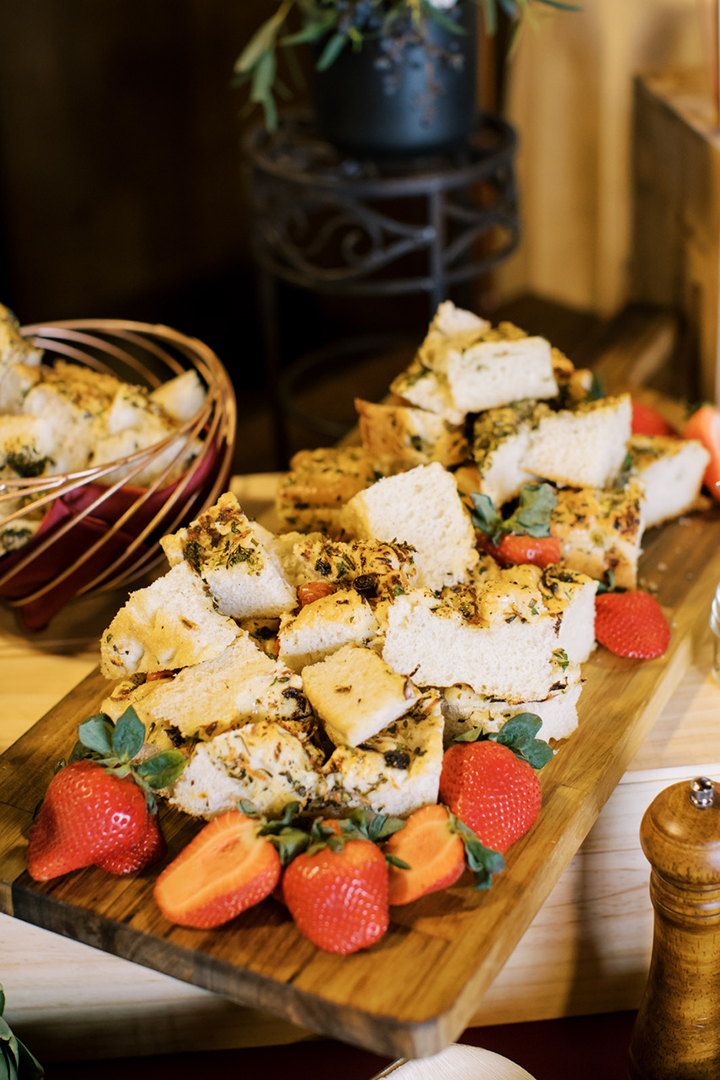
Charcuterie boards have had their moment (and they continue to), but now its time to make way for the bread board. A bread board is essentially that: different types of artisanal breads served with a variety of butters, oils, vinegars and cheeses, many of which can be localized. Photo courtesy Footers Catering
A bread board is essentially that: different types of artisanal breads served with a variety of butters, oils, vinegars, and cheeses, many of which can be local. For example, Cartewheels Catering’s Rustic Breads and Spreads board celebrates its Texas roots with pimento cheese spreads and honey butters.
“People go wild,” said Emily Simpson during the Chef Roundtable. “It’s just bread, but people are ready for the bread.”
Whether it’s a station, bread baskets in the center of the table, or individual plates, bread is back in a big way.
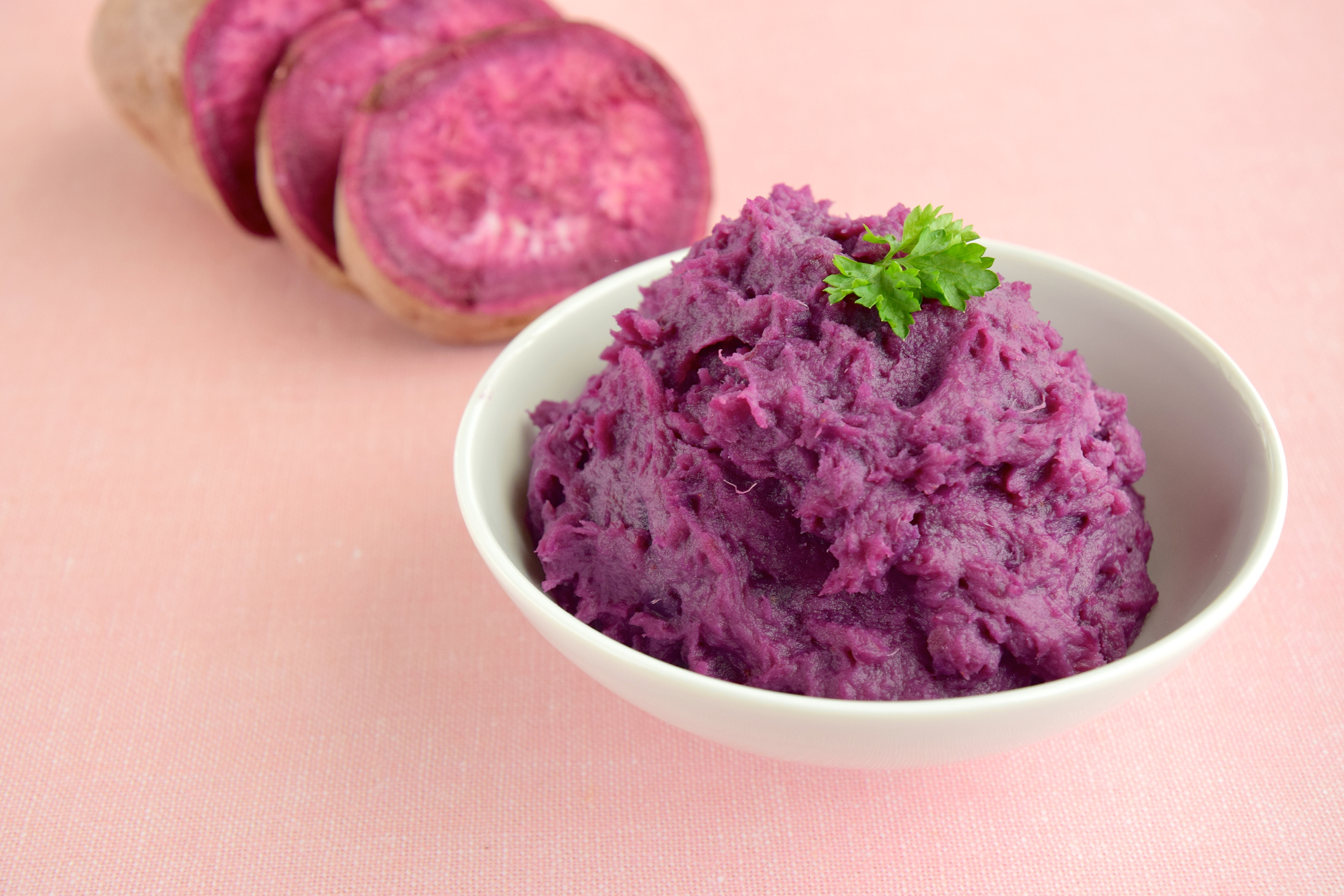
Ube flavored everything
A unique purple sweet potato is sneaking its way into almost every food aspect you could think of. The Real Simple explains the ube flavor to be even sweeter, more mellow taste than an orange. The Constellation Culinary team notes that ube-flavored anything is emerging in weddings as it is known to be high in healthy carbs, vitamins, fiber and extra-high levels of antioxidants. This new ingredient is being transformed into sweet treats like doughnuts and even soft serve ice cream.
Emergen-sea
The next wave of plant-based meat alternatives is seafood.
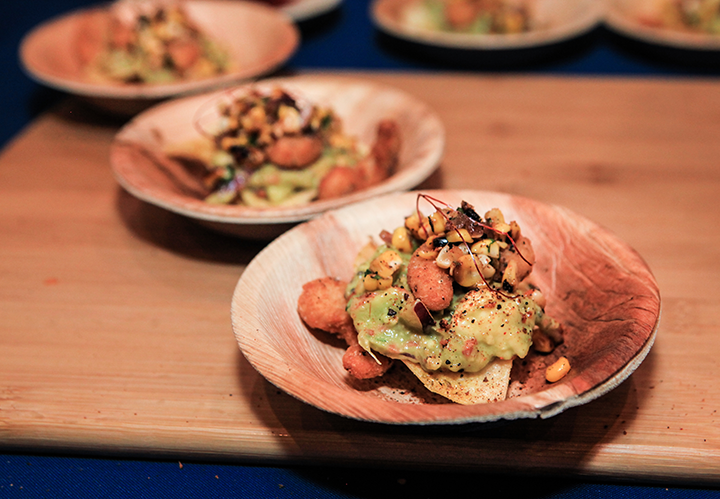
New Wave Shrimp® is a plant-based seafood alternative made with mung bean and seaweed. During the 2022 International Foodservice Editorial Council's Aannual Conference it was featured as part of a Tijuana Shrimp Bite which featured tortillas, an avocado & citrus salad (avocados, kiwis, oranges, limes, grapefruit, fennel, red onion, and mint), and a roasted tomato salsa (tomatoes, red onion, carrots, garlic, serrano chiles, and cilantro). Photo courtesy Buzz Orr Multimedia
Global fish consumption has doubled since 1998 and is projected to nearly double again by 2050; however, 70% of marine fish populations have been fully used, overused, or are under severe threat because of rising ocean temperatures, overfishing, and unsustainable fishing practices, and pollution, according to the Food Institute.
The continued popularity of seafood, and a keener focus on sustainability, has given rise to seafood alternatives. Common ingredients in alternative seafood products are mung beans, seaweed, soybeans, fava beans, peas, and green lentils. Additionally, banana blossom is gaining popularity because of its flaky texture.
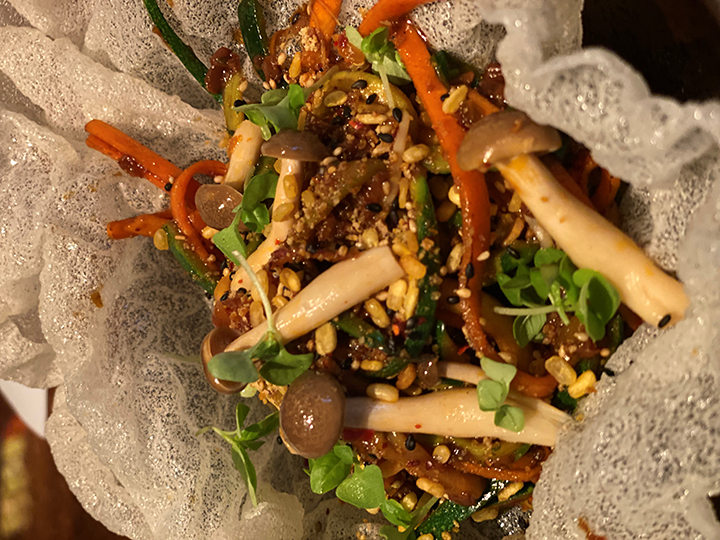
This dynamic vegetarian dish is inspired by a classic Sichuan nootle dish called Mayishangshu, which utilizes thickly cut zoodles (zucchini cut as noodles) that are charred in a vert hot wok along with carrots and mung bean sprouts and tossed with a spicy mushroom sauce. Recipe courtesy Tom Berry (Chief Culinary Officer for Coje Management Group. Photo courtesy Ruka Restobar
Ve-ghetti
It’s getting even easier to sneak in a serving of produce every day with the growing popularity of plant-based pasta. While chickpeas, cauliflower, and zucchini alternatives are nothing new, different produce is finding its way into pastas. Think noodles made from spaghetti squash, hearts of palm, and green bananas.
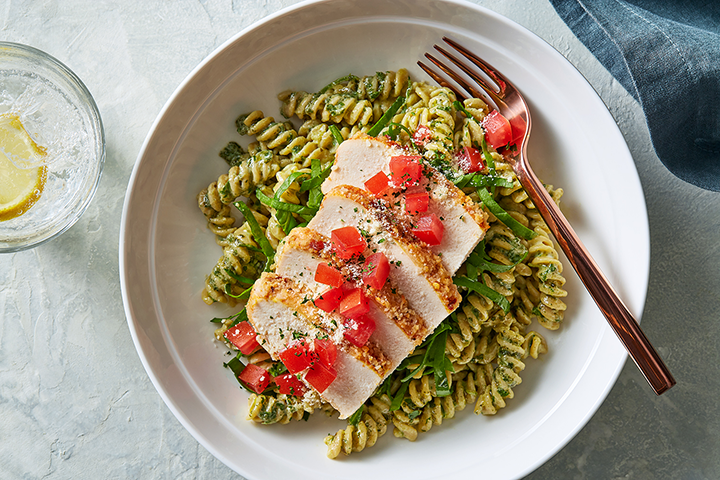
Chickpea Rotini in a creamy pesto with chicken. Photo courtesy Barilla
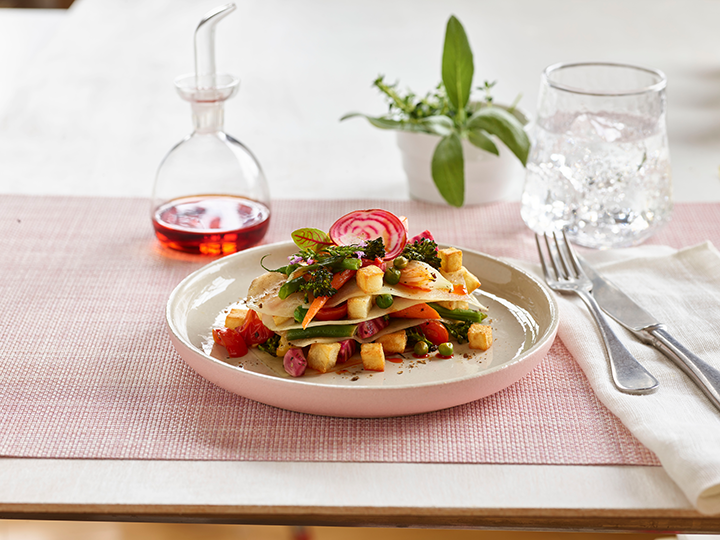
Idaho Potato “lasagna” sheets can be made with thinly sliced potatoes and seasoned with olive oil, salt, and pepper. Shown: Chilled Summer Idaho® Potato “Lasagna” with champagne vinegar and layered with other in-season roasted vegetables. Photo courtesy Idaho Potato Commission
Bottoms up
Bottoms up, upside down, or however you refer to desserts whose finishing flourish requires it to be flipped over atop a plate, there’s no denying their delicious appeal to your customers, according to General Mills Foodservice. The names may sound fancy, but they are easy to execute with maximum “wow” factor. Add them to your breakfast, lunch, dinner, or dessert menus for all-day enjoyment!
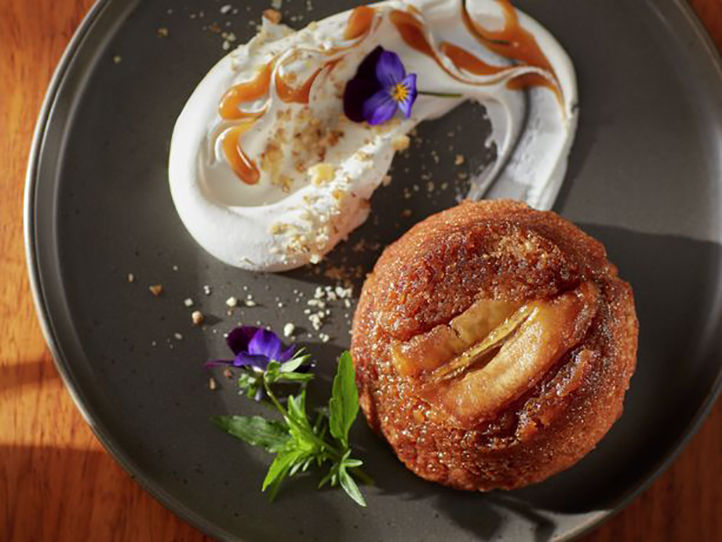
General Mills Foodservice's Banana Foster Upsidedown Cake features Pilsbury™ Tubeset Muffin Batter, brown sugar, bananas, and butter. Photo courtesy General Mills Foodservice
Mush ado about nothing
Unique and specialty mushrooms are having a moment. According to the New York Times, mushrooms are the 2022 “Ingredient of the Year."
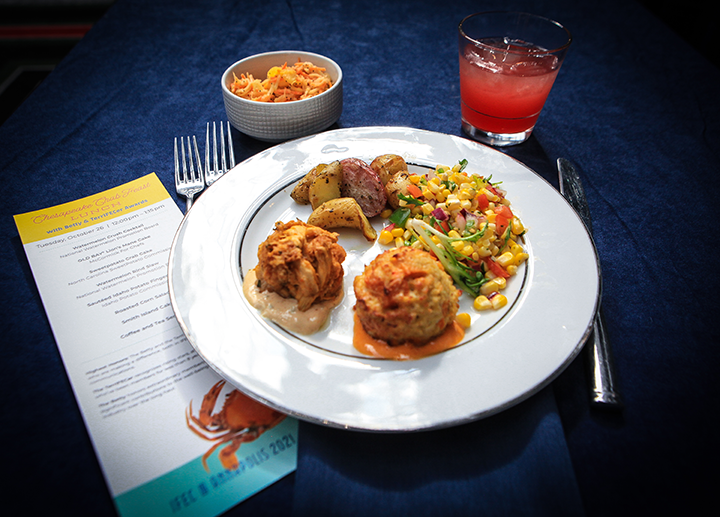
In 2021, the International Foodservice Editorial Council Featured a “crab cake” made from lion's mane mushrooms.Photo courtesy Buzz Multimedia
“Mushrooms are trending because they hold a unique and solid position at the intersection of flavor and wellness,” says Pam Smith, a consultant for the National Mushroom
Council. “They are the ultimate flavor lifter to any dish, prized by culinarians for their crave-able umami flavor, distinctive textures and culinary versatility.”
Today, such varieties as lion’s mane, maitake, shiitake, trumpet, and blue oyster are sought after for their incredible health and healing properties, according to Chantal Hause (Fabulous Food). In addition to serving mushrooms as a main or a side dish, mushroom cocktails are a hot new thing this fall and winter.

Most people equate the taste of lion's mane to that of lobster or crab meat, with earthier overtones. Lion's mane is tender and juicy when cooked, and it's often used as a seafood replacement (such as crab cakes) in vegan recipes. Photo courtesy National Mushroom Council
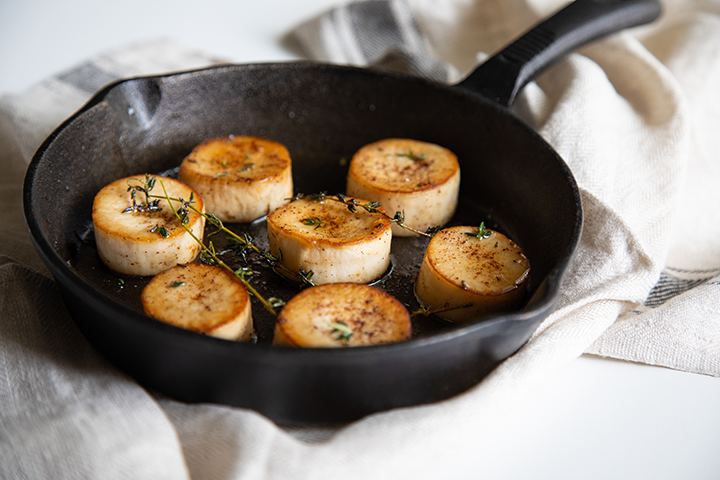
The texture of a trumpet mushroom is sometimes likened to abalone or scallops, which makes them an interesting option for vegetarians and are often billed as ‘mushroom steaks’ or ‘vegan scallops.’ Shown: Trumpet Mushroom Scallops with brown butter and thyme. Photo courtesy National Mushroom Council
“From the thick, meaty stems of king trumpets and the cabbage-like craggy appearance of maitakes to the bluehued oyster, satiating mushrooms deliver a memorable eating experience,” says Smith. “Always in season, mushrooms provide chefs with a broad canvas for menu exploration.”
Mucho mezcal
Mezcal lovers have some creative concoctions to look forward to, according to Hause. Mezcal cocktails are popping up everywhere and are the next hot sip.
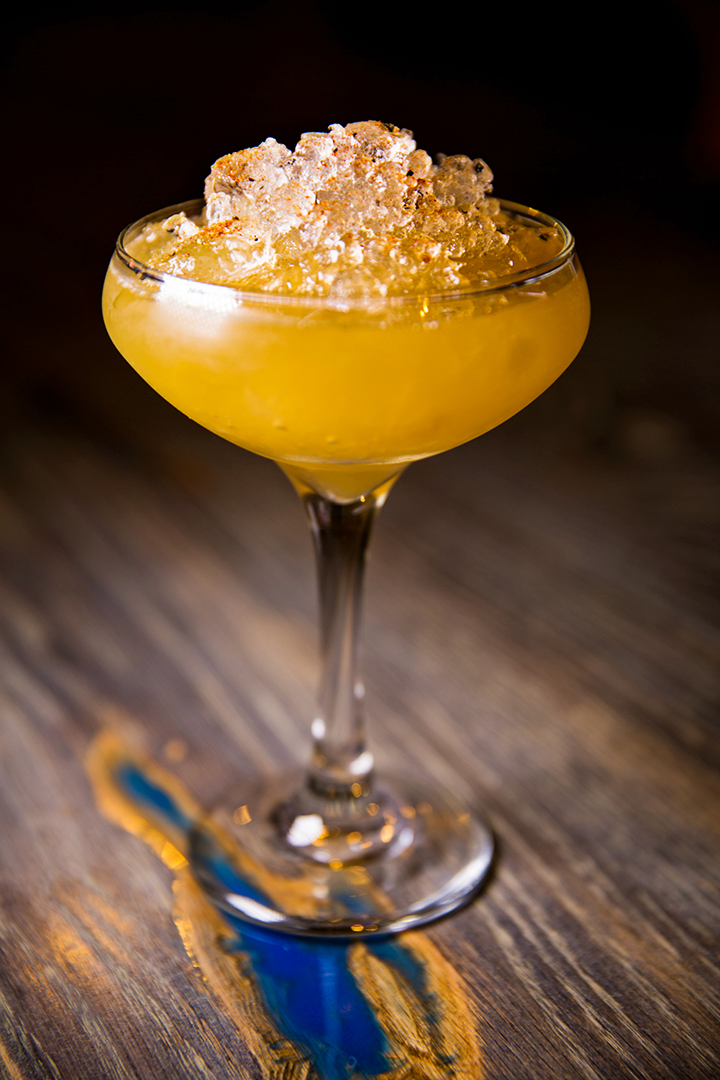
The Batata features Reposado Tequila,mezcal, charred lime jalapeno & peppercorn bitters, and sweet potato syrup (brown sugar, pureed roasted Covington sweet potato, water, chili flake, and cayenne pepper) Recipe courtesy Bud Taylor of the Bistro at Topsail. Photo Courtesy NC Sweetpotato Commission
Although mezcal has been steadily growing in popularity in the last five years, the smoky spirit is making a major play on menus as the replacement in some classic cocktails, such as a Negroni Oaxacan style, hot toddy, or an old fashioned.
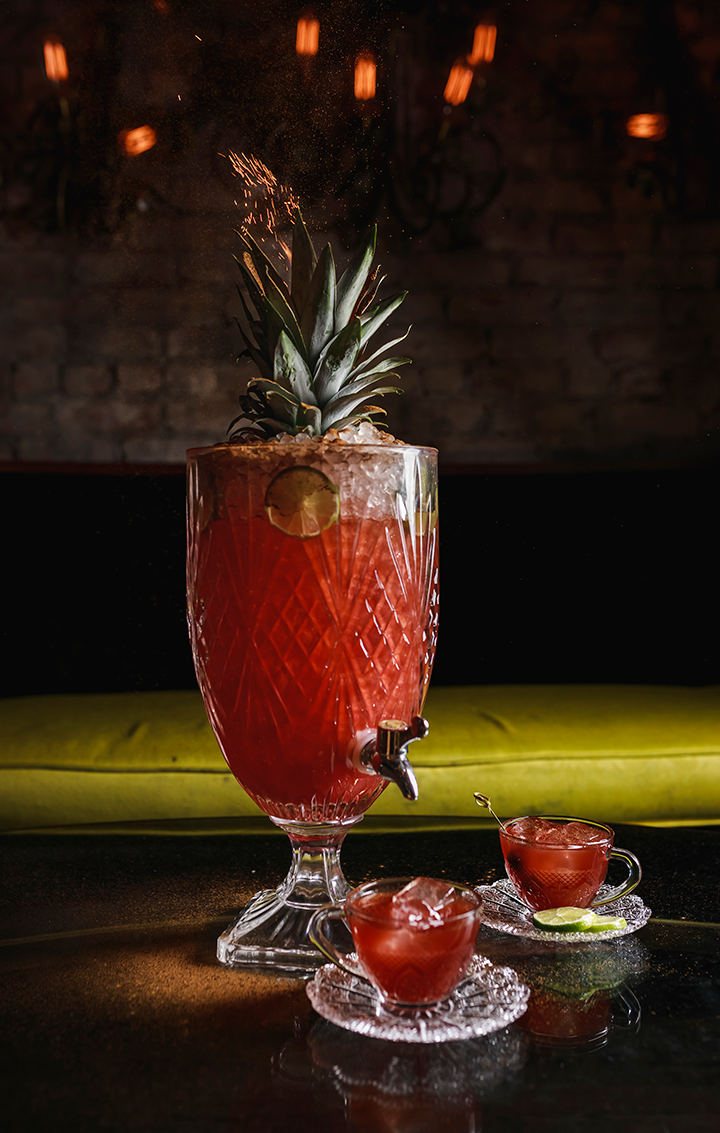
Yvonne's (Boston) serves a Heartbreaker cocktail that features spicy tequila, mezcal, pomegranate, orgeat, lime, and angostura served in a large format shareable style. Photo courtesy Josh Jamison
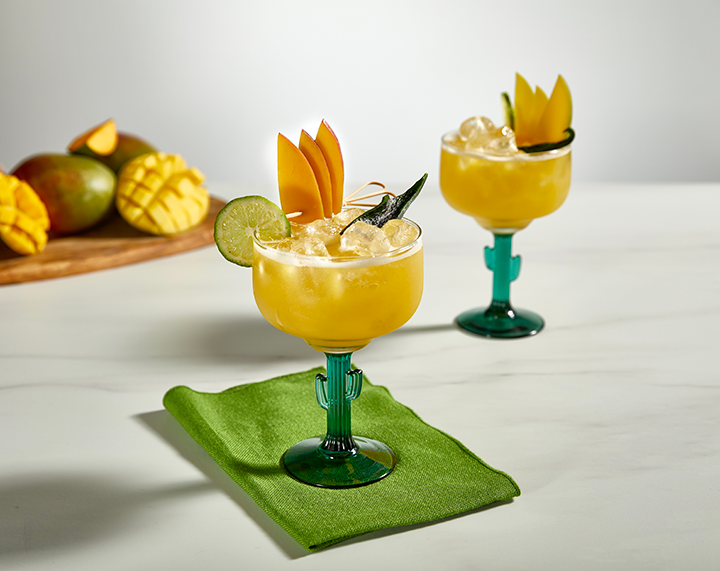
The Mango Muchacho Margarita is a delicious mix of muddled mango, poblano pepper, agave, fresh lime juice, tequila, and mezcal for a hit of smokiness.The drink is strained into an iced glass and garnished with a sliced mango fan, lime wheel, and a slice of charred poblano pepper for a spicy kick. Photo courtesy National Mango Board
Retro throwbacks
All the flavors you know and love from childhood are back—but with a healthy or adult twist. Whether you’re following a special diet or just looking to eat healthier, 2023 will see a wave of nostalgia hit menus. Think mac and cheese, but vegan-friendly, or vegetarian options of beef wellington (beet wellington and squash wellington), and unique twists on classic cereals.

Paying hoage to its glitzy supper club roots, Yvonne's (Boston) serves up classic dishes that bring a retro flare to the modern-day supper club including their always popular Baked Alaska (chocolate cake, vanilla semifredo, candy bar nougat, pistachios, chocolate almonds, salted caramel, and meringue). Photo courtesy Studio B
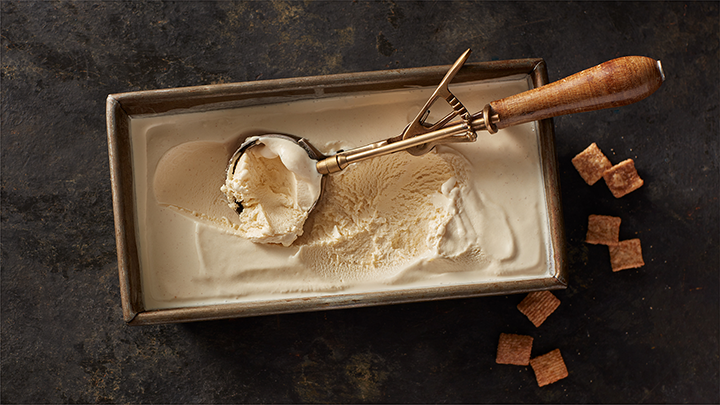
Cinnamon Toast Crunch™ in a creamy, ice cream form. Photo courtesy General Mills Foodservice

Nothing says nostalgia quite like a whoopie pie. The retro favorite can be elevated with unique ingredients, like this s'mores version from Hershey Foodservice. Photo courtesy Hershey Foodservice
“It’s comfort food that has been modernized,” said Charlie Schaffer (Schaffer LA) during the ICA Chef Roundtable.
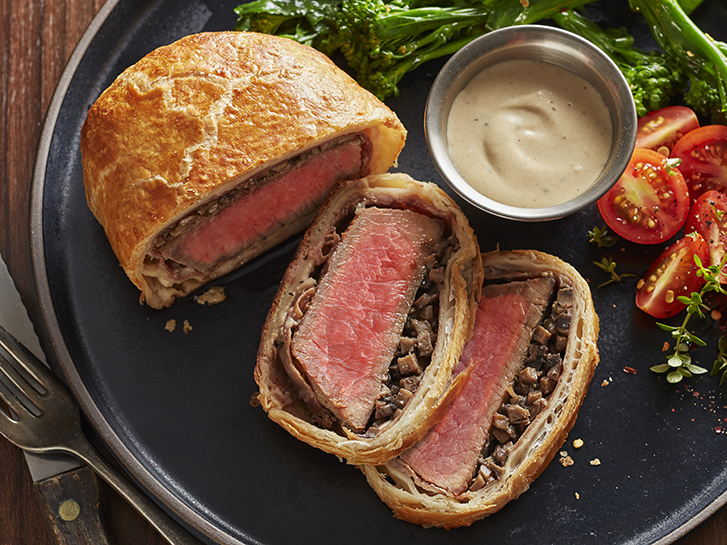
These individual beef wellingtons are topped with mushrooms, wrapped in prosciutto before being baked in a pastry and served with a cognac cream sauce. Photo cocurtesy General Mills Foodservice
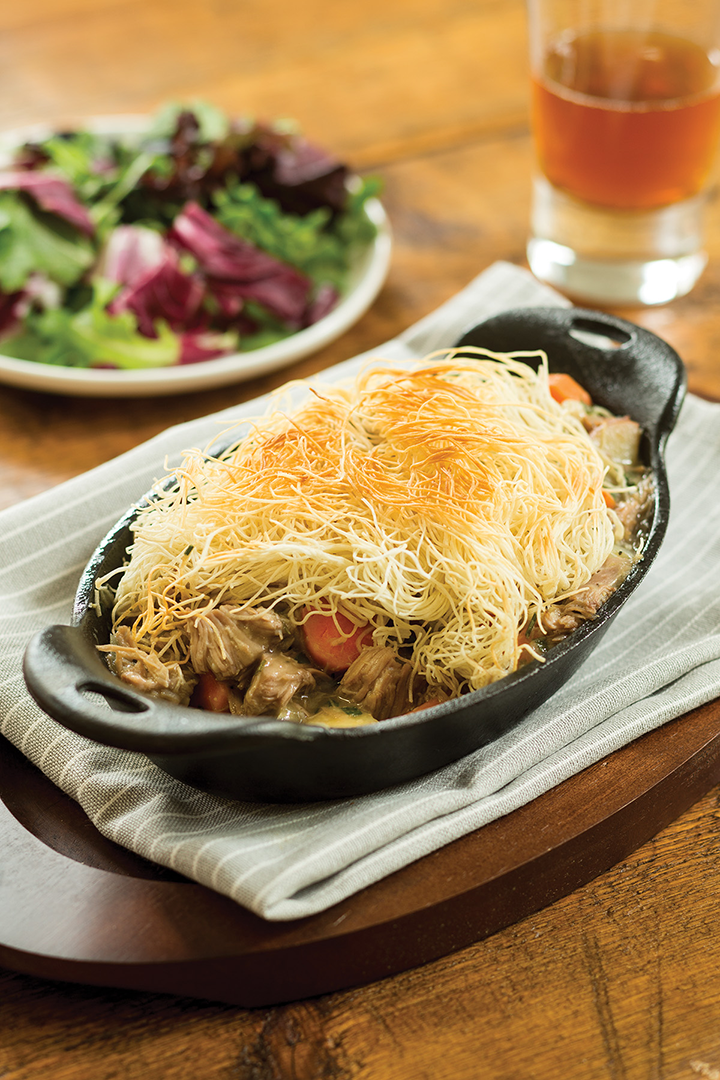
This lamb pot pie elevates the classic dish with a luscious root vegetable base matched with braised chunks of Aerican Lamb shoulder topped with a shredded filo dough lid. Photo courtesy American Lamb Board

An Old Fashioned Chocolate Soda made with chocolate syrup, heavy cream, crushed ice, club soda, whipped cream, and topped with a cherry. Photo courtesy Hershey Foodservice
Save the date
Dates have been around for thousands of years, but the fruit is now trending as an alternative natural sweetener. Whether it’s date syrup, date paste, or dehydrated dates, the fruit is being used in a range of ways, from ketchup to overnight oats, according to Whole Foods Markets.
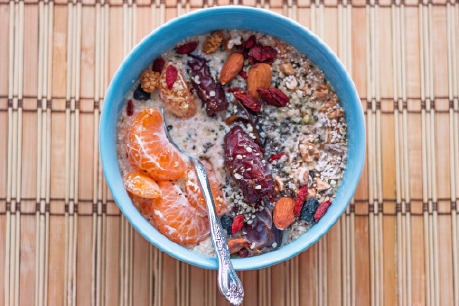
Oatmeal is still delicious when it is kept for a night and makes a quick and easy breakfast for morning. Added here are dried fruits, tangerine, and dates.
According to Mareya Ibrahim, an industry expert and trends watcher, dates are nature’s candy and they’re showing up in everything from dipped, stuffed and rolled to products made with dates, like vinegar and syrup. The biggest perk? Although varieties can be described as sweet-tasting as creamy caramel or buttery toffee, dates have a low GI or glycemic index, which means they're less likely to spike your blood sugar levels, making them a safe choice for people with diabetes or just trying to manage their weight. They’re also full of fiber and potassium, which helps to boost heart health.
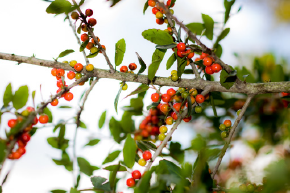
Yaupon
Yaupon is a caffeine-producing holly bush that can be found across the Southeastern U.S. The leaves can be used to make an herbal tea, which can then be incorporated into kombucha, cocktails, and other beverages.
Crazy for kelp
Expect to see more kelp-inspired products on grocery store shelves in 2023, according to Whole Foods.
According to Ibrahim, the number of products using kelp will continue to skyrocket as it’s so sustainable, full of plant-based protein (which is still a hot double-digit trendsetter) and is powerful in supporting healthy thyroid function and weight loss. Look for products made with kelp in every aisle and in supplements, too, from kelp burgers to shrimp, vinegar to hot sauce, seaweed salad to noodles – and kelp strips to add to your meals.
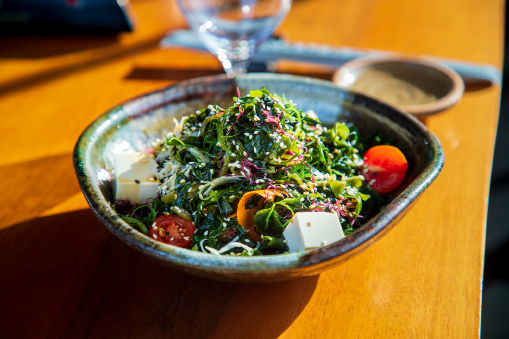
Chuka Wakame Seaweed Salad served with black and white sesame seed, tofu and cherry tomato.
Whether it’s kelp chips or kelp noodles, algae is a nutritious, versatile product that’s also good for the environment. Kelp can help absorb carbon in the atmosphere and doesn’t require freshwater or added nutrients, two major wins in the age of climate consciousness.
Check back every Friday now until February 10th for recipe inspiration on how to incorporate some of the 2023 food trends into your menu.



